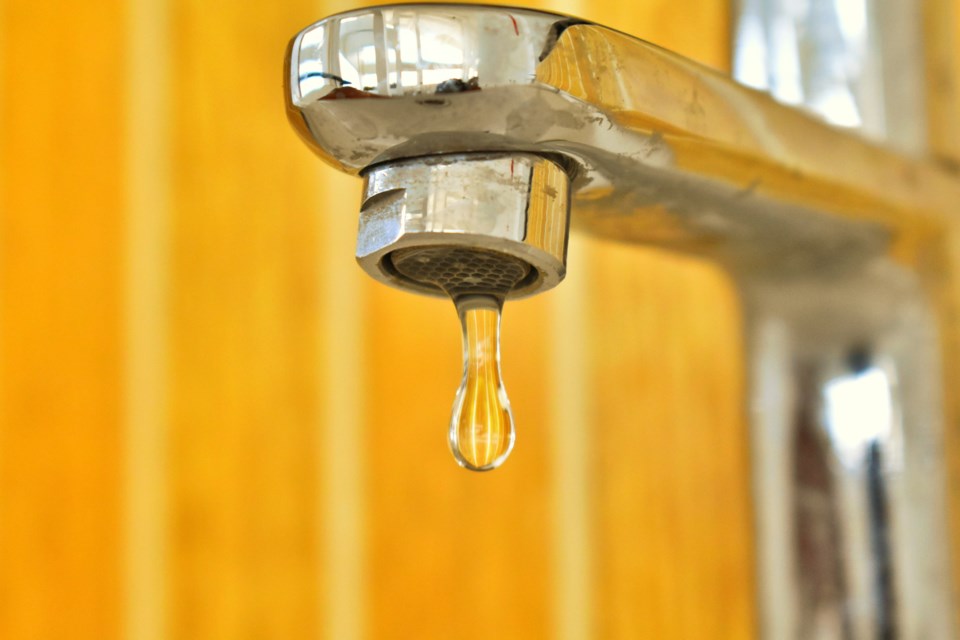A precautionary boil water advisory (BWA) issued Thursday evening for users connected to the Horseshoe well supply and distribution system is expected to be lifted this weekend, said water system operator Clearford Waterworks. This is a private system not a municipal system.
“The BWA is already being lifted (late afternoon/early evening Friday) for the majority of the water system users,” said John Levie, Clearford’s vice-president of engineering. “The issue really affected only a small section of the larger distribution system, and once this was clarified and reviewed with the MOH (Ministry of Health) they confirmed the BWA would only apply to the affected areas, and not the majority of the users."
For the remaining affected users, Levie said, the Ministry of Environment, Conservation and Parks (MECP) and MOH require two consecutive samples of water taken a minimum of 24 hours apart which show no microbiological contamination.
He said the first sample has already been collected and sent for analysis; the second will be collected Saturday, Oct. 9. Analysis of the samples takes 24 hours from the time the samples are plated for testing, Levie said, which puts Sunday as the most likely date the BWA will be lifted for the remaining affected areas, pending receipt of results from the laboratory.
The BWA was issued following completion of repairs to an isolated section of water main which resulted in a localized loss of pressure in a portion of the distribution piping serving areas of the resort complex, Levie said.
The repaired section of watermain was flushed with clean water and the concentration of chlorine in the water was tested in accordance with the requirements set out in the regulations and procedures issued by MECP, said Levie.
Tim Taylor of the Oro-Medonte Property Owners Association said on Thursday evening Clearford officials were delivering flyers to 454 households in the Horseshoe Valley community, approximately 1,200 water users at any given time, informing them to boil their water until further notice.
“If no one was home these flyers were left on porches,” Taylor said. “Many people learned of this via social media, not from anyone in any official capacity.”
Taylor said Saturday there are more questions than answers.
“Who is responsible for the co-ordination of the communications to the public on such vital information?” he asked. “Why wasn't the communication handled better?
“Most importantly, which government body is responsible for oversight and ensuring our water is safe to drink at all times?”
Levie said, as an added precaution, a sample of water from the affected section of the distribution system was collected and transported to an accredited laboratory for analysis of microbiological contamination.
The results of that sample, Levie said, were returned as non-detect/overgrown (NDTOG), Levie said, which means when the lab tested the sample, the result was so overgrown it was not possible to tell what organisms were present nor the quantity.
“In 99 per cent or more of samples where there is no other indication of contamination, the root cause is external contamination of the sample during collection or testing,” Levie said.
“The bottle or cap might have inadvertently touched a contaminated surface such as a counter or gloved hand or shirt/jacket, the tap where the sample was collected may have been in a kitchen or bathroom or it may not have been properly disinfected before the water was sampled, the sample itself may have come into contact with the hand of the operator collecting the sample or the lab technician who plated the sample, or someone could have coughed or otherwise contaminated the sample prior to testing," Levie explained.
“The expected reason for the NDTOG result in the original sample is sampling or testing error and not the water quality,” Levie said. “We fully expect the two samples will clearly show there is now and never was any contamination in the system.
“Our operators are working closely with the MECP and MOH to quickly resolve this issue, lift the BWA and return the remaining affected users to normal water use,” he said.
The source of this drinking water is a secure groundwater supply or well, Levie said, and regular testing of the well water has never shown any indication of contamination.
He said the well water is treated in accordance with the requirements under the procedure for disinfection of drinking water in Ontario and sampled to ensure compliance with the Ontario drinking water quality standards.
“There have been no concerns with respect to the quality of water produced and distributed to the users of the system and regular sampling and testing of water following treatment and in the distribution system has not shown any water quality concerns,” Levie said.
He said the water must also be regularly tested to confirm the concentration of residual disinfectant, or chlorine, in the system.
The minimum permissible
“At the time the sample of water in question was collected the concentration of chlorine in the water was 1.69 mg/l, which strongly supports sampling or testing error as the root cause,” Levie said.
